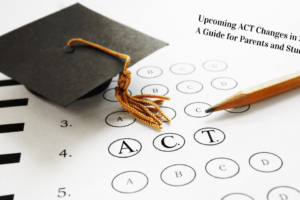Adaptive Teaching: Mixing It Up

Snowflakes, fingerprints, whatever cliché you want to reference, we know all students are unique. The question is how do we educators avoid rote, the belief that students can obtain knowledge through inflexible repetition and memorization? I worked with a student a few years back who was essentially failing English class because he could not remember vocabulary words. The fact that vocab weighed so heavily on his class grade is a subject for another post, but we came up with a rather “unorthodox” way for him to remember his words: I had him write deprecating sentences about me. Nothing too acerbic, but we had worked together for a while and developed a good rapport, so it didn’t bother me if he wanted to write something like “because he is a misanthrope, Phil one day hopes to live in a log cabin with his dog miles from society.” It was made memorable because the two of us had shared complaints about basically everything, from slow drivers to teachers who take points off for incorrect margins. We were essentially a couple of whiners, so writing a sentence like that made him laugh and, more importantly, stuck with him. Long story short, we need to be willing to “change it up” when we are teaching. How can we make it memorable and adjust the lesson so that it suits all of our snowflakes? Here are my (as always) humble ideas regarding this:
Personalize It: This was easy in the situation described above and, although it may not always be possible in a larger class setting, the more you know about a student, the more you can personalize the transfer of information. Not only does this convey a sense that you care on a level deeper than just making a student memorize words or facts, it also fosters rapport, which can be invaluable in connecting with and successfully teaching a student.
Use Humor: Maybe I’m just a teenager at heart, but I’ve always found my students to be funny in their own ways. Some are outright hilarious, others have already mastered the art of sarcasm, and still others are unintentionally amusing. The use of humor is so underrated in our academic society. Psychologist Randy Garner points out that “well-planned, appropriate, contextual humor can help students ingrain information.”* I might add that even unplanned humor can add a feeling of genuineness to a classroom or tutoring session, build a level of trust, and present the information in a much more memorable way.
Be Ok with Changing the Program: Realizations are not always pleasant, but they can inform you and help you improve. If you realize that your lesson is not going well, don’t be afraid to change it up. I have been teaching SAT and ACT classes for a decade, and I promise you, there have been countless times when I’ve realized that I’ve lost them: you know, those blank stares while you explain semi-colon usage for the umpteenth time. It would be easy enough to just keep plowing through the grammar lesson but, just as I’ve learned to walk away from monotonous tasks when I’ve lost focus, I’ve learned to be ok with scrapping that particular lesson and trying something different. Just last week, as I lost another batch of students to punctuation ennui, I decided to change it up and instructed them instead to write original sentences. I know it doesn’t sound thrilling, but they got into the idea of writing a sentence that, for instance, uses two commas, a semicolon, and mentions me and my misanthropy…in fact, they couldn’t wait to share their originals, many of which were entertaining to say the least. The simple act of changing it up made a difference and the best part was that they still got their punctuation lesson whether they realized it or not.
Adaptability in teaching sounds easy. In practice, it’s a little harder as it requires you to be honest, flexible, and creative. It’s a vital skill to have when charged with transmitting not-so-exciting information (e.g. semicolon usage) to a student population with high expectations. I don’t mean to make it sound like entertainment should trump education, but rather that it is important to find a balance that will bring students in, let them breathe, and actually walk away thinking (but NEVER admitting) that it wasn’t that bad.
*http://www.apa.org/monitor/jun06/learning.aspx
Written by Phil Lane



